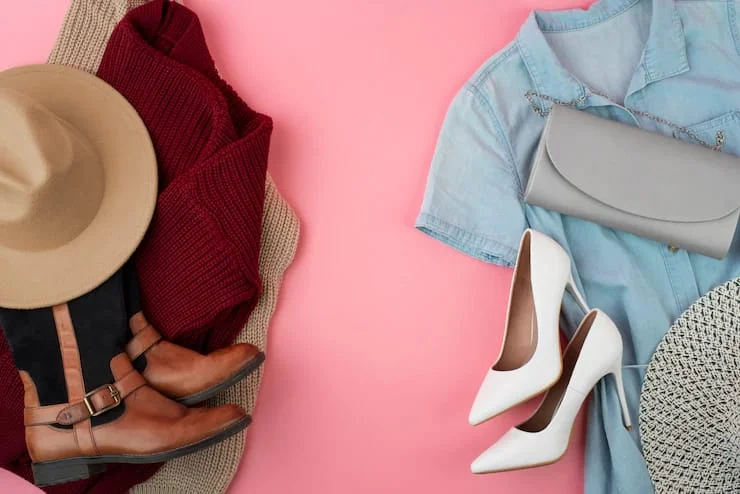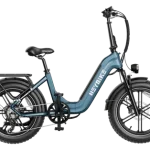Fashion has always moved alongside culture, but today’s shifts are faster, more layered, and often shaped by changes in how people live day to day. The way people work, socialize, travel, and spend downtime is influencing clothing in ways that feel practical more than decorative. Designers are paying closer attention to the flow of real life—how often people change locations, how long they wear the same outfit, and how much flexibility they want in their wardrobe. Fashion is becoming less about standing out and more about fitting into the rhythm of everyday life.
This change doesn’t mean clothing has lost its personality. Instead, there’s a clearer focus on comfort, ease of wear, and design choices that match how people actually move through their day.
Adjusting Designs for Changing Daily Routines
More people are moving between different types of settings throughout the day, and clothing is starting to reflect that. Pieces that used to be limited to specific occasions are being replaced with items that work across several parts of life. Wardrobes now include more clothing that works for staying in, heading out, or joining a last-minute video call. As routines shift, the demand for versatile and simple clothing is increasing across all ages and style preferences.
In response, new fashion releases are placing more attention on real-life flexibility. Designers are adding stretch to denim without losing structure, which makes pieces like printed floral stretch denim pants feel more wearable all day. Tunics are gaining popularity again for their loose fit and layering ease. Casual sets—like short-sleeved tops paired with matching shorts or wide-leg pants—work well for both errands and informal meetings. Flowy dresses that can be styled up or down are becoming everyday go-to pieces, not just weekend options.
Prioritizing Comfort Across All Categories
Comfort used to be associated with loungewear, but now it’s expected in nearly every clothing category. More people want clothes that feel soft, stretch easily and don’t restrict their movement. That expectation is now showing up in workwear, casualwear, and even pieces considered dressy. Fabric blends, smoother finishes, and unstructured fits are showing up everywhere, from shopping mall racks to online capsule collections.
Designers are responding with smarter material choices and subtle design tweaks. Blazers now come unlined or lined with jersey knits for added flexibility. Button-down shirts are cut with roomier sleeves and soft collars that reduce stiffness. Pants are being made with wide waistbands, gentle tapering, and forgiving fabrics that hold shape without feeling rigid.
Choosing Fabrics That Are Easy to Maintain
Clothing that requires special washing or constant steaming is starting to disappear from everyday wardrobes. As people spend more time managing busy schedules or splitting hours between home and work, they want clothing that’s simple to take care of. Designers are selecting fabrics that can hold up in the washing machine, dry quickly, and stay presentable without much attention.
Popular styles now include wrinkle-resistant knit dresses, machine-washable slacks, and easy-care blends that still look polished. Items like poly-cotton button-ups or rayon blends in structured pieces make it easier for people to repeat outfits throughout the week without looking underdressed.
Blending Activewear into Daily Style
People are walking more, carrying more, and sitting longer during the day than before. Clothing that supports movement is becoming part of everyday outfits, even when no one is working out. Athletic fabrics, drawstrings, elastic waistbands, and breathable panels are appearing in clothing that doesn’t look sporty at first glance but still feels good to wear for long hours.
This trend is showing up in smart ways, such as trousers with flexible inner bands or polished jackets made from stretch material that holds its shape. Tops made with moisture-friendly fabrics are styled like casual basics but perform better throughout the day. The use of activewear-inspired features is helping everyday clothing meet the physical demands of life without needing to switch to athletic gear. Designers are finding quiet ways to support mobility and comfort through thoughtful detail.
Slower Fashion with Timeless Palettes
The speed of fashion trends has started to slow down as more people choose pieces they can wear across seasons. Instead of cycling through color trends that change every few weeks, many shoppers prefer neutral tones and subtle shades that stay relevant longer. This change supports a more stable wardrobe and reduces the pressure to keep buying new items just to stay current.
Designers are building collections around palettes like olive, beige, charcoal, muted blues, and soft creams. These tones work across different clothing categories and can be layered without clashing.
Responding to Relaxed Dress Norms
Across workplaces, events, and social settings, the definition of “dressed appropriately” is becoming broader. Fewer people are wearing stiff, traditional outfits, and more are choosing clothing that looks neat but feels relaxed. Workplaces now accept items like structured joggers or stretch-fabric chinos. Even events that used to require formal wear are more open to clean, casual options.
Designers are supporting this shift with tailored looks that use soft materials and relaxed fits that still hold shape. Midi dresses with side slits, smart sneakers, and wide-leg pants with clean waistbands are all part of this update. Clothing is less about following a rule and more about showing up in something that looks thoughtful without feeling restrictive.
Following What Customers Actually Want
Fashion brands are paying closer attention to what customers wear repeatedly instead of what trend forecasts suggest. Many companies now use direct feedback from buyers to decide which pieces stay in production, what colors get restocked, or what fit changes are needed. Customer-led collections are more responsive to how people live, not just what they scroll through online.
This way, brands can avoid excess inventory while offering products that feel useful and personal. Instead of launching large seasonal collections, some designers focus on refining what already works. Best-selling cuts get released in more colors. Fit adjustments are made after reviews. Style is shaped more by what people wear week after week than by runway photos or trend reports.
Designing for Indoor and Outdoor Balance
Many people now split their time between indoor and outdoor environments, often without a clear boundary between the two. Fashion is responding with clothing that works in both settings, offering comfort, weather flexibility, and a clean look that adapts easily.
Examples include water-resistant coats that pack easily, cotton-knit dresses with hoods, and sandals designed with cushioned soles that support longer walks. Layering pieces, such as lightweight overshirts or utility-style vests, give structure without adding bulk.
Fashion is adjusting to how people live now, being less rigid, more mobile, and shaped by practical needs. Designers are focusing on pieces that match the pace and flow of modern routines, from easy-care fabrics to flexible fits. As daily habits shift, clothing is becoming simpler to wear, easier to style, and more focused on long-term comfort.







